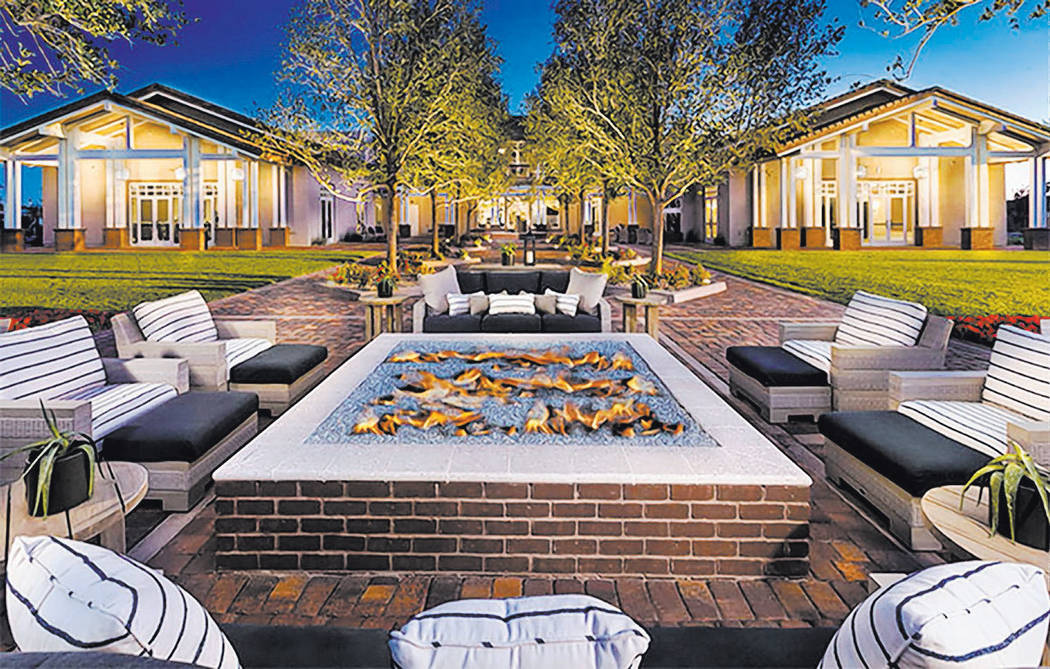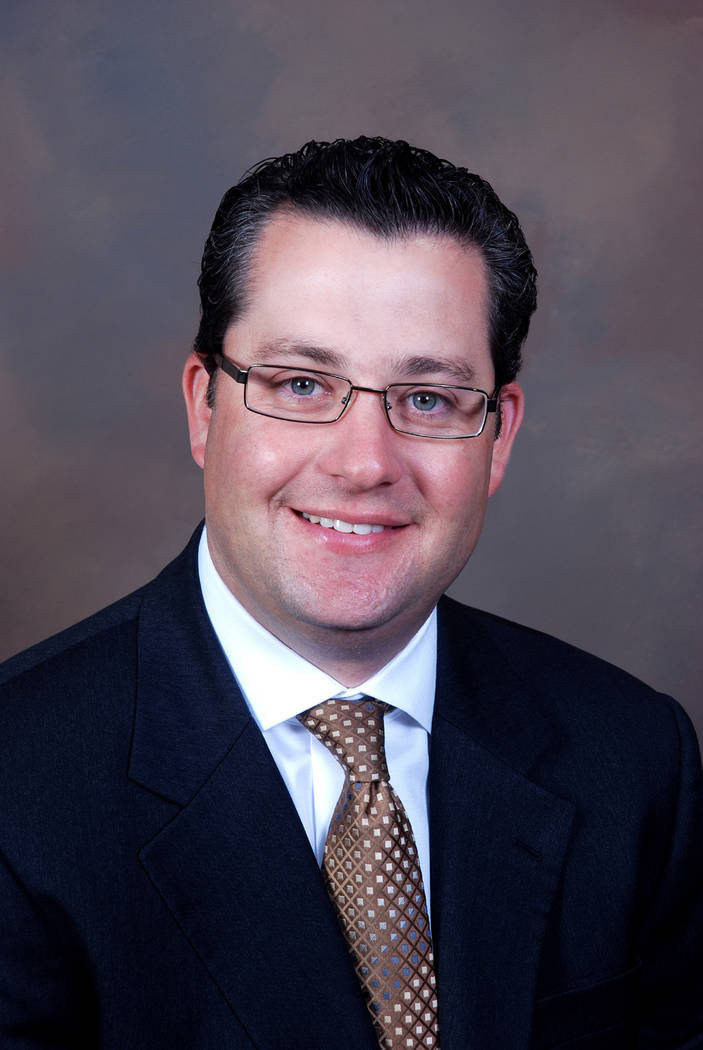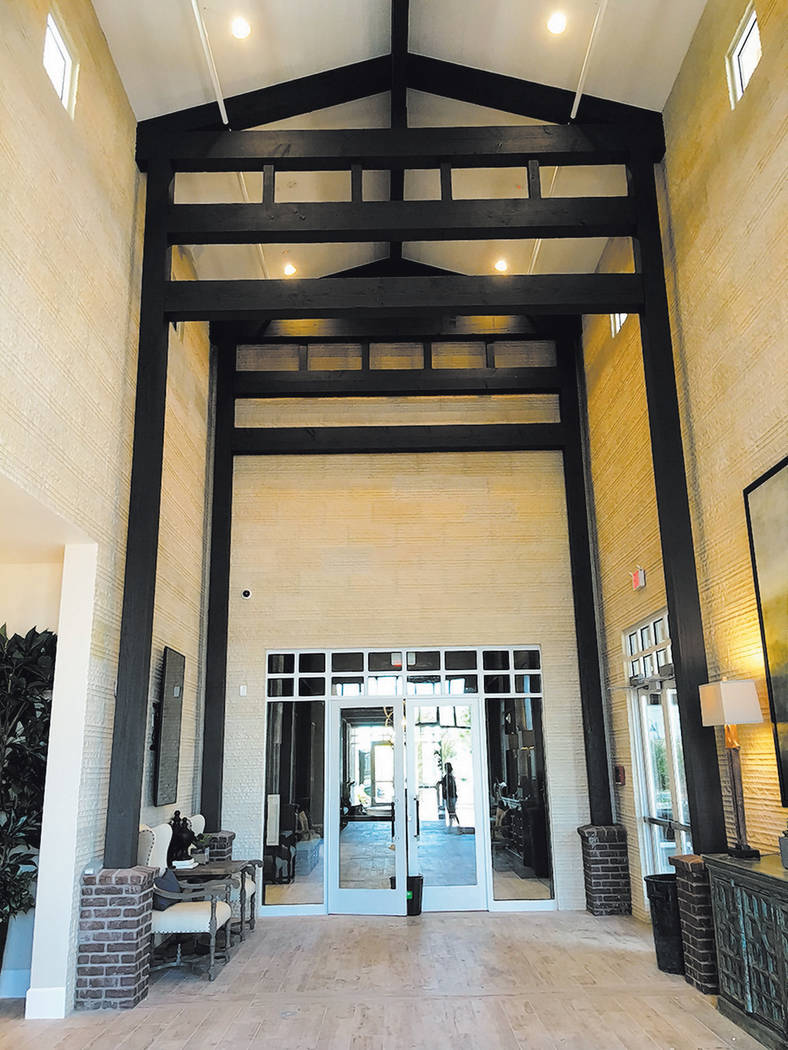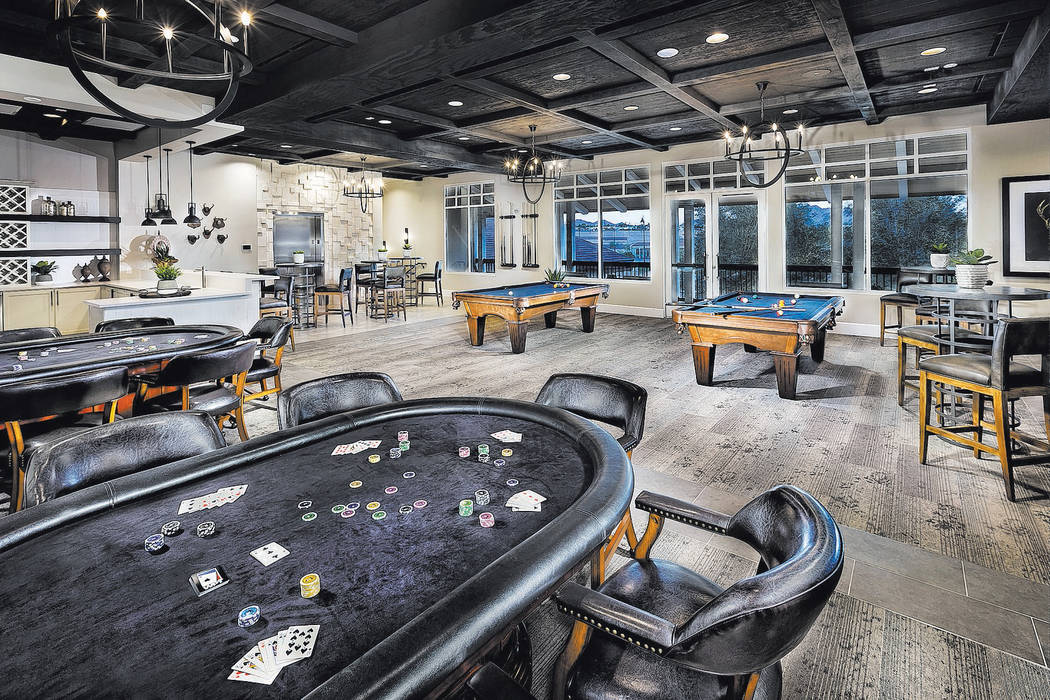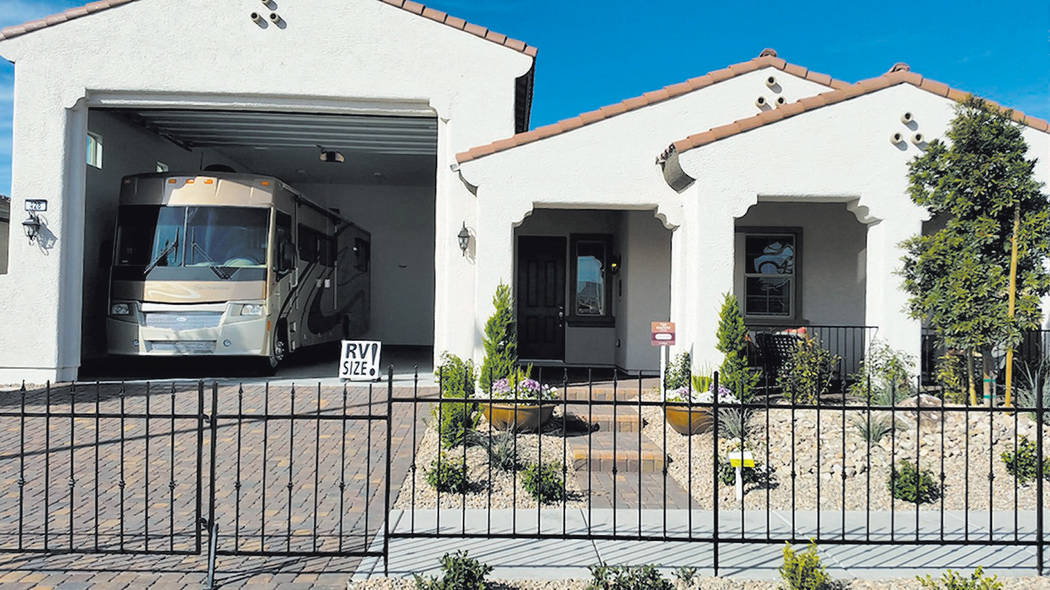New home sales slightly dipped in 2019, but don’t tell that to the valley’s five largest builders, who saw their share of the marketplace jump dramatically since 2017 to two-thirds last year.
Lennar Homes held on to the top spot as the No. 1 builder in Las Vegas during 2019 and the top five builders dominated the market with 67 percent of the net sales when there were 9,930 — some 0.6 percent fewer sales than 2018. The top three builders had sales increases over 2018, and the market share for the top five has steadily grown from 44 percent in 2017 and 55 percent in 2018.
Lennar’s 1,612 net sales — contracts minus cancellations — surpassed its 1,540 in 2018, according to Home Builders Research President Andrew Smith. He said Lennar’s 2018 merger with CalAtlantic, which was a previous merger between Ryland and Standard Pacific, helped make them No. 1 builder in the Las Vegas market.
Lennar, meanwhile, had the No. 2-selling community in 2019 with its Symphony at Heritage for active adults at the Cadence master plan in east Henderson. It had 157 sales for its multigenerational homes that on the low end sell for $380,000 for 1,667 square feet.
Lennar was followed by No. 2 KB Home with 1,582 net sales, which was one ranking higher than 2018 when it had 1,214 sales. Its Groves at Inspirada was the No. 3-selling community in 2019 with 138. The town home project starts about $250,000 for just under 1,400 square feet.
Richmond American moved up to third in 2019 with 1,128 sales, besting its No. 4 ranking in 2018 when it had 956 sales.
No. 4 on the list was DR Horton by recording 977 sales in 2019, down from its second place ranking in 2018 when it was 1,220 sales.
Private builder American West Homes, which was sold in 2019 to PulteGroup, retained its fifth-place ranking with 600 sales but that was down from 708 in 2018. Following American West Homes, Pulte Homes ranked No. 6 with 583 sales, down from 594 in 2018.
Combined, the two builders had 1,183 sales, which was good enough for third place.
Pulte had the No. 1-selling community in 2019 with The Heights at Reverence with 160 sales. They have an average closing price around $800,000.
“We continue to be quite impressed with the volume of sales occurring for the community given its relatively higher price point,” Smith said.
Smith also lauded Symphony at Heritage and Sun City Mesquite by Del Webb, which is No. 4 in top-selling communities, “for cementing Southern Nevada’s appealing as a retirement destination. Del Webb is opening two age-restricted communities in 2019 at Lake Las Vegas and North Las Vegas. The remainder of the top 10 selling communities were in master-planned communities, town home projects and other affordable neighborhoods, he said.
Century Communities came in at No. 7 with 553 sales, down from 660 in 2018. Pardee Homes is No. 8 with 526 sales, down from 581 in 2018.
Beazer Homes is No 9 with 512 sales, down from 525 in 2019. Toll Brothers is No. 10 with 382 sales. Toll didn’t crack the top 10 in 2019 when 401 was the No. 10 level of Woodside Homes, who fell out of the ranking in 2019.
Smith said the combination of large public builders gives them even more of an advantage over smaller companies.
“The big builders have the ability to offer a broader range of products whereas the smaller guys typically focus on a particular price range or type of home,” Smith said.
Builders offers new-home outlook
The new-home market was the focus of a recent breakfast held by the Southern Nevada Home Builders Association.
Permits fell 4.8 percent in 2019; single-family closings fell 4.5 percent, while attached homes rose 18 percent.
Brian Gordon, a principal with Applied Analysis, said with job growth and that 36 percent of new arrivals are coming from California and bringing their home equity with them should continue to bolster the new-home construction.
Smith said he’s excited about 2020, given the stability in 2019.
“For all the major indicators from closings and permits to be down less than 5 percent, if you said that in January 2019, everybody would have been OK with that based on what was happening at the end of 2018 (with higher interest rates around 5 percent),” Smith said. “It seems, despite the overarching timidity or nervousness out in the world in general, Las Vegas housing seems to be in a good place for now. With the sales we saw in January, which was the highest in more than a decade, it seems like we could flip off that. Most indicators will be up by the end of the year based on interest rates not changing.”
Smith said there continues to be a transition in the marketplace with a greater percentage of town homes and build-to-rent homes. There have been aggressive land purchases to build more rental homes by American Homes 4 Rent, he added.
“They have land all over the valley, and we will see how that plays out for them and if there will be any other big-time players in that segment coming in,” Smith said.
Ryan Brault, a regional director for research firm Metrostudy, said 2019 was a flat year. He said that is because projects were closing out and there was not enough to meet the demand of buyers.
Brault said what stood out in 2019 was the continued growth of Cadence in east Henderson, which saw its national ranking rise from 19th in 2018 to a tie for ninth in 2019.
“The emergence of North Las Vegas for new-home activity also has taken off,” Brault said. “I expect that to continue. If you look at the lots that have been delivered in the past year, and lots out there going forward, there are two submarkets out there that have more future lot pipelines: North Las Vegas and northeast Henderson with Cadence and Lake Las Vegas.
Home Builders Research reported North Las Vegas and the northwest valley made up 40 percent of net sales in 2019 at 20 percent each. North Las Vegas only had 11 percent of the market share in the first half of 2018. Henderson makes up 22 percent and the southwest valley continued its decline to 28 percent. The east valley makes up 4 percent; there’s 2 percent in the south and 4 percent in miscellaneous areas.
Brault said the continued development of casino resorts and other projects on the Strip will lead to more housing demand. He predicts new home starts to increase by 1 percent to 2 percent in 2020.
“One factor that sets this market apart is the in-migration,” Brault said. “You are seeing this continued trend of people moving from higher costs and higher-taxed states to ones with a lower tax burden. I’m positive and think we are a low-risk market over the next few years.”
Gordon said there’s only a two-month supply of existing homes on the market — about 6,700 homes. About one-quarter to one-third of those won’t sell, he said. Others are held by institutional investors who won’t put them on the market and continue to rent them out, he said.
“They are either overpriced or require a lot of capital to make them livable,” Gordon said. “Folks out there looking for resale products that aren’t out there bodes well for the homebuilding industry. For folks who were not considering a new build will be looking in that direction. There are alternatives out there. While there are gaps in prices between existing and new homes, the reality is those gaps aren’t quite as big if someone wants to live in a particular part of the valley. New builds are competitive in many areas.”
Gordon said builders are starting to gear up on land acquisitions and there could be a gap between those land buys and getting new homes ready to meet the growing demand in the short term. There hasn’t been any opening of megaresorts like in the 2000s when the housing market had stronger demand. Adding thousands of jobs creates housing demand will help the market, he said.
“Over the long term we should see more of that product come online,” Gordon said. “It’s another stable year for 2020, and we like where the market stands and should remain positive over the next 12 months. We’re undersupplied, today, with a bit of a crunch. Today, we’re building 10,000 housing units a year. At the peak we were around 35,000 but prior to that we were in the 20,000 range. Getting back to something that looks normal would be great but that will stretch to 2030. But we could see the numbers increase from 10,000 to 12,000 in the next few years. That’s a possibility, and I like where we are positioned.”
Smith said barring any drastic changes with the national economy and lack of land to prevent overbuilding, the market should remain steady over the next three years.
Brault said the market should be steady over that extended period but wouldn’t be surprised if there’s a decrease in 2021 given land availability and the timeline needed to bring projects online. That could prompt some price increases, he said.
“There could be a gap in there in this new-home supply next year with projects closing out and not enough of those new projects ramping up and haven’t opened yet,” Brault said. “It could be a temporary issue of undersupply until we get back to where we should be in supplying enough housing. We have these great demographic tailwoods with millennials to have the money to afford to buy a home and boomers moving down. This market has done a better job than most to pivot to get the place we are building more affordable housing. We’re building smaller floor plans and more attached products.”

